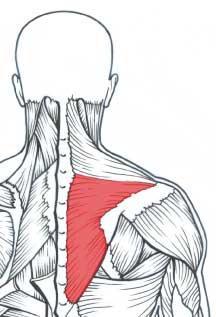This is one of those “No-Duh” type studies that you’ll see from time-to-time. First, let me give you the abstract:
Shoulder Joint and Muscle Characteristics in the Recreational Weight Training Population.
Department of Physical Therapy, Nova Southeastern University, Fort Lauderdale, Florida.
Kolber, MJ, Beekhuizen, KS, Cheng, MS, and Hellman, MA. Shoulder joint and muscle characteristics in the recreational weight training population. J Strength Cond Res 00(0): 1-10, 2009-Shoulder disorders attributed to weight training are well documented in the literature; however, a paucity of evidence-based research exists to describe risk factors inherent to participation. Shoulder joint and muscle characteristics in the recreational weight training (RWT) population were investigated to determine specific risk-related adaptations that may occur from participation. Ninety participants, men between the ages of 19 and 47 (mean age 28.9), including 60 individuals who participated in upper-extremity RWT and 30 controls with no record of RWT participation, were recruited. Active range of motion (AROM), posterior shoulder tightness (PST), body weight-adjusted strength values, and agonist/antagonist strength ratios were compared between the RWT participants and the control group. Statistical analysis identified significant differences (p < 0.001) between the groups when analyzing shoulder mobility. The RWT participants had decreased mobility when compared with the control group for all AROM measurements except external rotation, which was greater. Strength ratios were significantly greater in the RWT group when compared with the control group (p
Now, I don’t mean to be-little the work of the researchers, but I think any strength coach or personal trainer worth their salt could tell you the exact same thing.
It’s quite obvious when you work with strength trainers that they are far too dominant in the big, powerful muscles (like the pecs, lats, quads, etc.) and lack motor control and strength in the stabilizing musculature (posterior ‘cuff, lower traps, glute medius, etc.)
This is yet another reason why we not only need motor control and activation drills, but we need to learn adequate progressions to get these muscle groups stronger as well. It’s not enough to simply learn how to use them – we need to have their STRENGTH balanced with opposing muscle groups as well.
Eric and I covered tons of motor control drills for the lower body in our Magnificent Mobility DVD, and Bill and I covered many for the upper body in our Inside-Out DVD and manual. Both can be found on my Products page.
Stay strong
MR
PS – Did you miss my most recent newsletter? If so you can find it HERE. But if you missed it, it’s because you’re not signed up to get newsletter updates. Just fill in the info at the top of the page and you’ll NEVER be out of the loop again!

